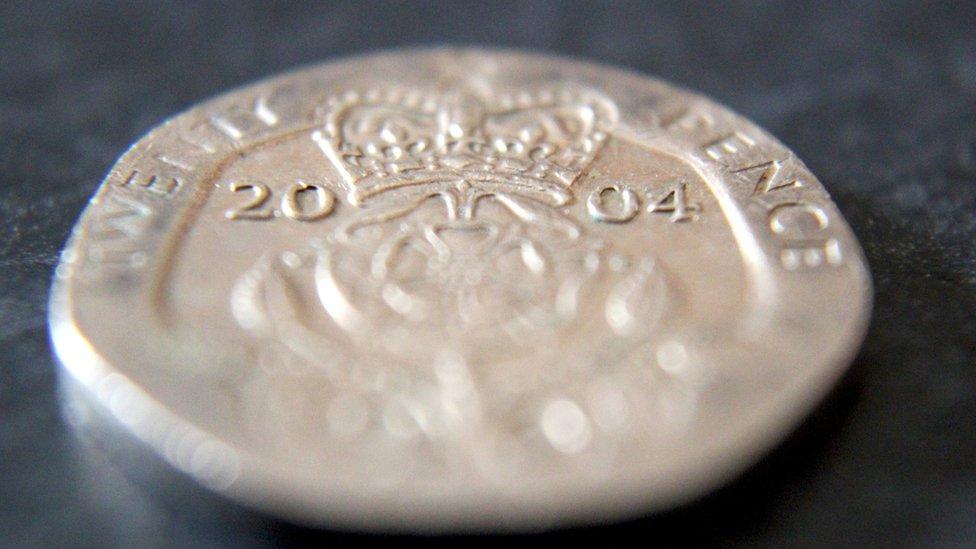Royal Mint makes jewellery as people go cashless
- Published
"From my standpoint - it is fun"
As people are using less cash, the Royal Mint has expanded its offering by turning to jewellery making.
Last year, the world's largest export mint produced 3.3 billion coins from its base in Llantrisant, Rhondda Cynon Taff.
But production has now started on a range of jewellery costing between £80 and £2,000 and for Christmas, a 16ct handmade gold bauble will be created.
Traditional coin-pressing techniques are used to make much of the jewellery.
"Because we're used to working with precious metals, the minting process lends itself to making some of those components," said new business development engineer Daniel Thomas.
"We've also introduced some new crafting processes and coupled those together to develop a new range.
"We've got over 1,100 years in manufacturing coins so it is a step change but we utilise the same quality inspection and pride in craftsmanship manufacturing and applied that to jewellery."
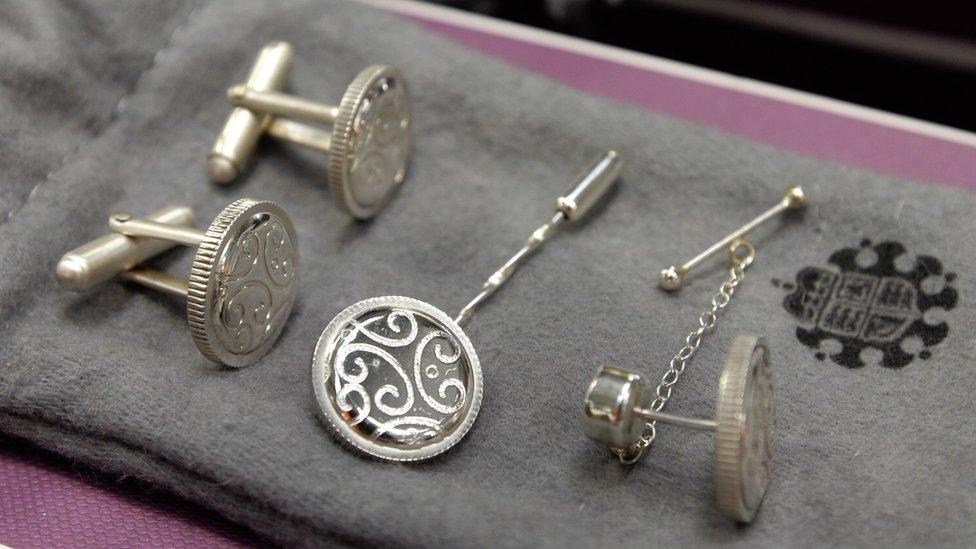
Cufflinks are part of the jewellery range being introduced by the Royal Mint
Production of the jewellery - which ranges from cufflinks to necklaces - began earlier this year and have been on sale since July.
Helen Cooper, director of gifting, said: "We are about reinventing the Royal Mint.
"It's been around for 1,100 years and it's about coming up with a new proposition and a way of working which gets us fit for another 1,000 years.
"We're not seeing the world is suddenly going cashless, but we do recognise there is a change in the way people want to choose to spend their money.
"So while this is an important part of our diversification, currency is still the bedrock of our business."
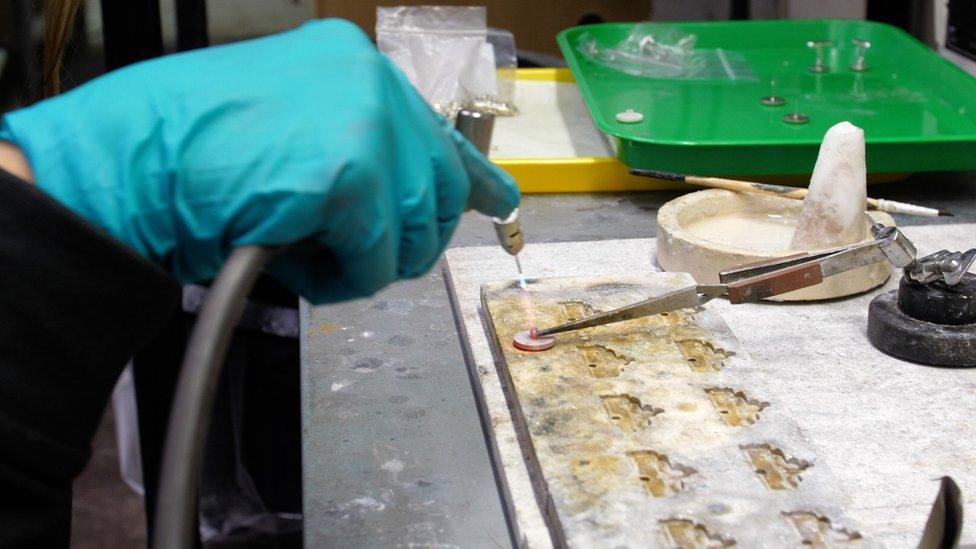
Traditional coin pressing methods are used for producing some of the jewellery with the rest made by hand
- Published8 August 2019
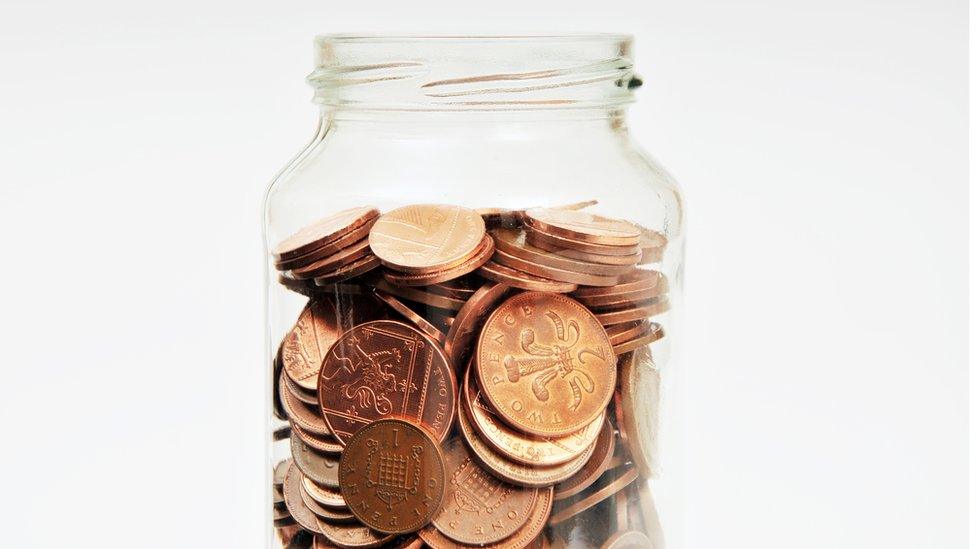
- Published24 May 2019
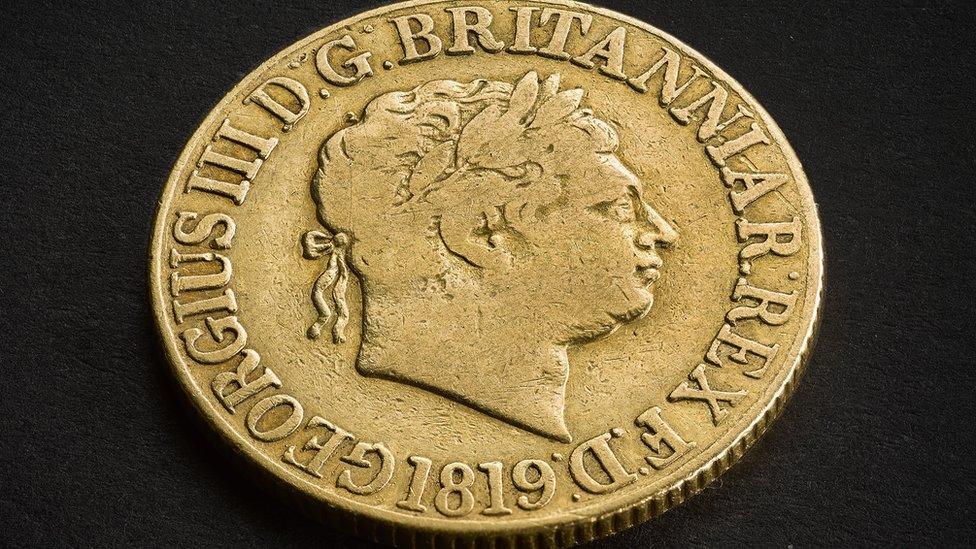
- Published10 May 2019
